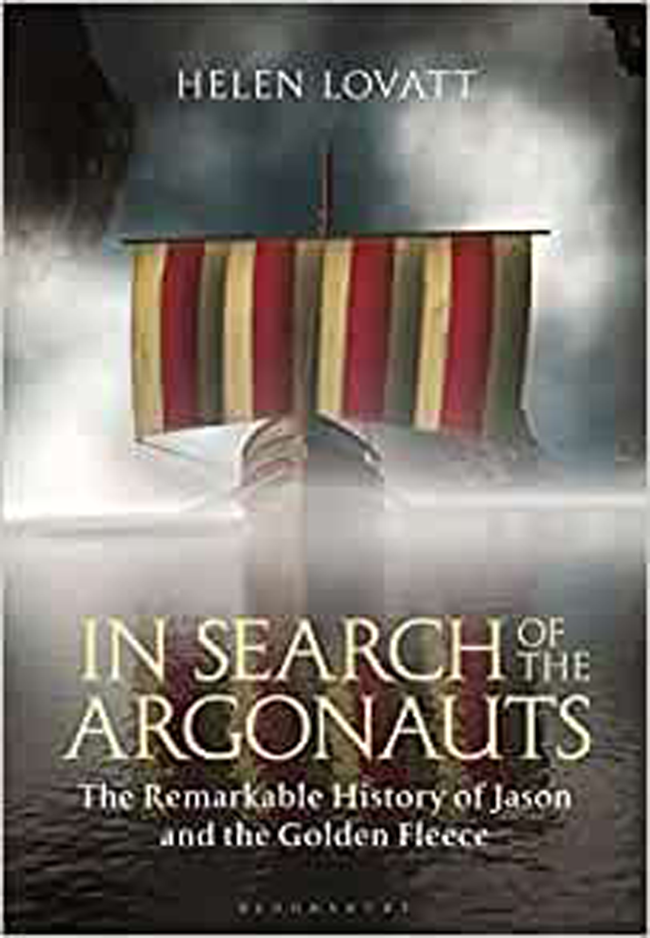
The Trojan War stories are very familiar to most of us, but the adventures of Jason perhaps less so, and they deserve to be better known as they include an extensive range of topic and theme particularly relevant to today's questioning society. Lovatt traces the development of the story through ‘eight landmark versions’ (p. 9), but covers many others, and includes the expected Classical authors, tragedy and epic, modern European authors, children's literature, opera and art (the book is well illustrated). There are full notes and a list of versions/texts (xi–xv). Lovatt has a clear focus, and the detailed discussion is evidence of her extensive research.
Lovatt discusses (chapter 2, Femininity and Sexuality) such figures as Atalanta, a disturbing female presence among the male Argonauts, Hylas (was Heracles' love erotic or parental?), and Medea, by far the best known and written about of the characters. From where did she derive her power? Was she a strong woman or just a witch, a saviour or a traitor, an object of desire or fear, of sympathy or hatred? Successive authors seem almost to compete in their presentation of this powerful figure. How do we view the all-female society of Lemnos, as a society turned inside out, a threat in a male-dominated society or a glance back to some golden age of a matriarchal society, as survivors or murderers? The answers may depend on the perspective or gender of the reader.
Chapter 3, Masculinity and Leadership, asks what makes a hero – special powers or skills, parentage or outstanding virtue. Can a woman be a hero, what makes an ordinary person (like us) a hero, does divine help or a magic power detract from one's heroism? What makes a good leader? Is Jason a good leader if he is reactive rather than proactive? How do you treat your team; do you bond or seek to control? How do you cope with a rival leader like Heracles (leave him behind), and what do you do when he is gone? What makes a villain, savagery or merely difference, and how can a villain be a worthy opponent? What is the relative value of brain vs brawn? Should you treat an enemy, like Amycus, with mercy or just kill him? Again, these questions are ones we ask today.
Chapter 4, Entertainment and the Marvellous, covers the role of the gods, incongruous figures in the 21st century except perhaps in children's literature. They have been viewed as both ‘psychological allegory’ (p. 108, cf Virgil Aeneid 9.185) or as explanations of natural phenomena. Are the human characters players or pawns in the game of life? Monsters like Talos, who can be seen as extremes or distortions of humanity, can evoke both fear and sympathy.
How do we treat others, strangers and foreigners, in general? Do they attract or repel us? Do we judge them or try to learn from them, impose our own ways on them in the name of ‘civilisation', or simply destroy them? Our generation is not the first to debate these issues. Should we attempt to rationalise the tension between the geographical Mediterranean setting and the presence of exotic marvels, mythical beings, barbaric foreigners? (Chapter 5, Ethnicity and Otherness)
A hero's adventures (Chapter 6, Heroism and Betrayal) may include a journey, a quest, heroic feats (fighting a dragon), a (distracting) woman, near-death situations, success and failure, a time for self-development, a ‘coming of age', moral choices. Is the cost of glory worth it? Is it more reprehensible to kill a child or an adult (Absyrtus)? Is it easier to identify with a hero like Jason who is flawed?
Chapter 7, Quest and Fleece, examines interpretations of ‘myth'. ‘Myth is by definition multiple’ (p. 202), and is constantly being reshaped. Each new retelling uses, adapts or ignores its predecessors to suit its context, its audience's perspective or its author's agenda. There is no canonical Argonautica; Apollonius is a starting point, not definitive (p. 5). Valerius Flaccus' Roman Argonautica, for instance, views the story from a first century imperial perspective with a cosmic dimension. Few versions apart from his include Hercules' rescue of Hesione. How ‘true’ is any myth, a question discussed by Diodorus Siculus (4.44.4-6 see p. 91) which continues to exercise Christian theologians today.
Chapter 8, Findings and Endings, sums up and looks to the future. Lovatt's detailed discussion has shown how a familiar myth can be adapted to suit its context and how each generation can add new meanings and perspectives to the narrative. The voyage of the Argonauts includes all the aspects of a good story: entertainment, a gripping plot, timeless appeal, the starting point for discussion, and elements of the exotic and fantastic, but it is more than this. Many questions are raised and explored in their context, but the final answers are left to us the readers to reflect on and judge. Lovatt's approach has particular relevance today with our interest in the power and role of women, in diversity, race and identity, in gender roles and reversal, in celebrities, in youth vs experience. It is a safe environment in which to explore such issues and to understand how our different perspectives may affect our point of view.
The book will appeal to Classical scholars and students of reception studies, and to anyone who loves a quest, literal or metaphorical, and wants a starting point for a discussion of any of the issues covered in it. It may prompt you to look out your childhood copy of Charles Kingsley, or track down the 1978 Dr Who series Underworld. It may make you see James Bond or Phileas Fogg with new eyes. Perhaps we all have our own golden fleece. If this is you, this book is only the start of your journey.


